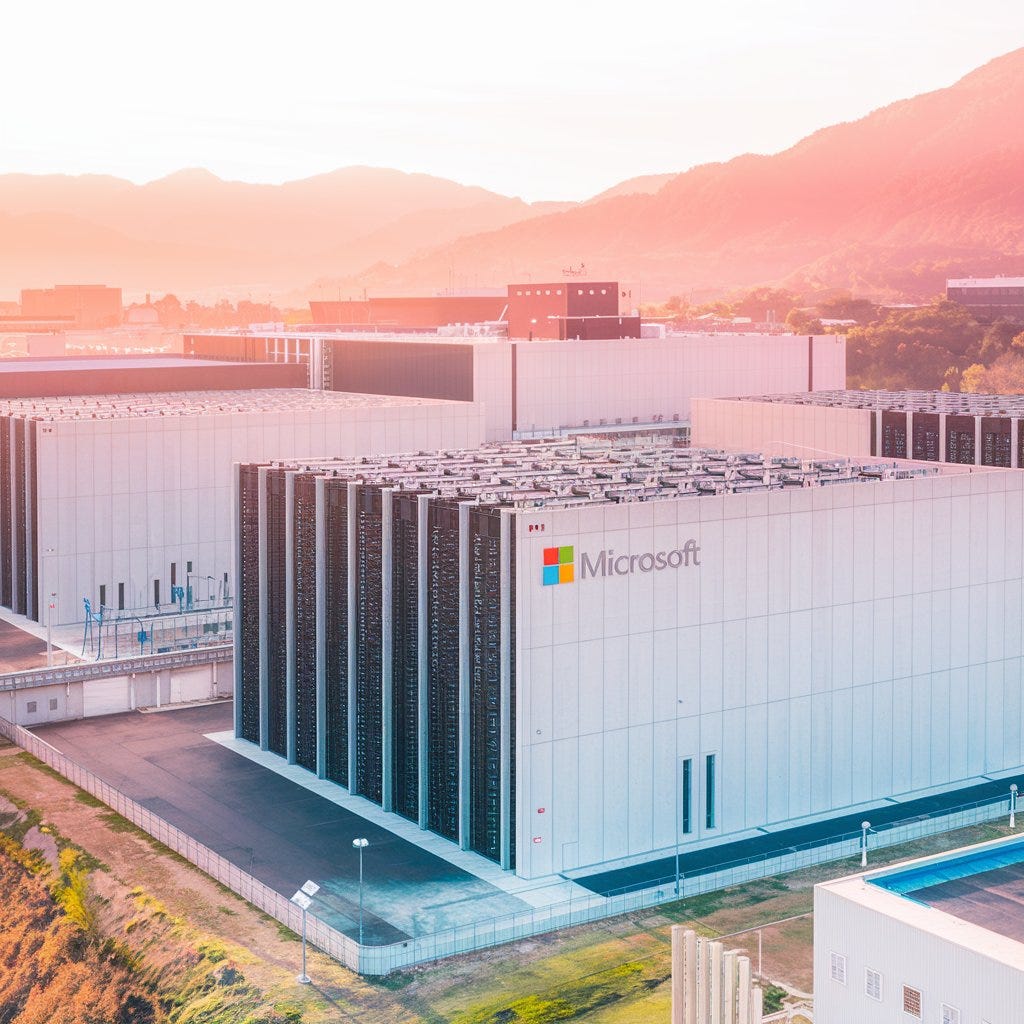Microsoft’s Chile Gambit: The Hidden Strategy Behind Its $3.3B Cloud Region Bet
Microsoft didn’t just expand into Chile; it built a sovereign-grade digital backbone for the Southern Cone and rewrote the cloud playbook for emerging markets.
Welcome to Global Data Center Hub. Join 1300+ investors, operators, and innovators reading to stay ahead of the latest trends in the data center sector in developed and emerging markets globally.
Executive Summary
Microsoft launched the “Chile Central” cloud region in June 2025, its first in Chile and third in Latin America.
The Santiago-based region includes three independent datacenter zones offering Azure, Dynamics 365, Microsoft 365 with local data residency, and Power Platform services.
It is Microsoft’s largest investment in Chile since 1992, $3.3B of CapEx expected to unlock $35.3B in downstream ecosystem revenue over the next four years.
The region is powered by 100% renewable energy through AES Andes, making it the cleanest hyperscale deployment in Latin America to date.
The investment is part of the “Transforma Chile” initiative, which includes workforce development for 180,000 Chileans and a government-backed advisory board to shape inclusive digital growth.
With Brazil and Mexico already online, Chile completes Microsoft’s LatAm triangle, positioning the company to lead AI and cloud services across the entire region.
What Happened
In a move long anticipated since the 2020 announcement of “Transforma Chile,” Microsoft officially activated its Chile Central region this month, bringing hyperscale-grade services to a country historically underserved by top-tier cloud infrastructure.
But this is no edge site.
It’s a full hyperscale region with three availability zones
It offers sovereign data residency for government and regulated sectors
It plugs directly into Microsoft’s global cloud network of 60+ regions and 400+ edge nodes
It’s powered by renewable energy through custom solar and wind PPAs with AES Andes
It’s designed for AI-readiness, supporting high-density workloads and low-latency delivery across southern South America
The result?
A new launchpad for AI infrastructure, cloud adoption, and sovereign digital policy that reshapes not just Chile’s economy, but the balance of hyperscale power in Latin America.
Why It Matters
This isn’t about bringing the cloud to a new market.
It’s about reframing how and where hyperscalers grow when compute demand, political trust, and energy strategy must align.
1. Sovereign Infrastructure as a Strategic Lever
Microsoft’s Chile region solves one of the biggest adoption blockers in Latin America: data residency.
With full compliance-grade storage and processing inside Chilean borders, sectors like banking, healthcare, and government can finally migrate mission-critical workloads to the cloud.
That’s not a service add-on.
That’s a strategic unlock.
2. Energy Is the First Constraint And the First Differentiator
By securing 100% renewable power through AES Andes, Microsoft achieved more than ESG alignment.
It guaranteed long-term energy security for latency-sensitive AI workloads, while sending a message to regulators that clean firm power is no longer a “nice-to-have.”
This isn’t greenwashing.
It’s energy arbitrage as infrastructure advantage.
3. Regional Latency Just Became Competitive Advantage
With cloud regions in Brazil, Mexico, and now Chile, Microsoft controls the lowest-latency AI corridors across Latin America.
Santiago is now positioned to serve Argentina, Uruguay, Bolivia, and Peru, offering AI-ready performance from a compliant, resilient regional hub.
In a world where milliseconds matter, Microsoft now owns the Southern Cone's digital rails.
4. Public-Private Alignment as Deployment Catalyst
This launch didn’t happen in a vacuum.
Microsoft co-developed policy pathways with Chile’s government
It embedded an advisory board of local leaders
It committed to skilling 180,000 Chileans
And it matched infrastructure investment with inclusive growth initiatives
The result?
Regulatory trust. Political goodwill. And zero delays.
That’s the future of hyperscale in emerging markets.
5. Workforce Development as Competitive Moat
$3.3B buys datacenters.
But $35.3B in ecosystem value comes from talent, startups, and partner networks built around it.
Microsoft’s “Transforma Chile” isn’t just CSR.
It’s nation-scale ecosystem design.
One that ensures local capacity can absorb, extend, and scale cloud-native and AI-native solutions for the next decade.
What This Means
For Investors
This is the new template for profitable cloud expansion in emerging markets: align with government priorities, secure clean energy at scale, and build sovereign infrastructure. CapEx flows where trust, talent, and transmission meet.
For Operators
Latency is the new differentiator. If you’re not embedding sovereign data handling, energy resilience, and AI capacity at the regional level, your facilities won’t make the shortlist for the next hyperscale buildout.
For Policymakers
Microsoft didn’t choose Chile because it’s the largest market. It chose it because it had a stable energy plan, clear regulatory incentives, and a government willing to co-invest in human capital. Want the next $3B? Copy that playbook.
The Bottom Line
Hyperscale expansion isn’t just about cloud anymore.
It’s about compute, carbon, and cooperation.
Microsoft’s Chile launch is a masterclass in how cloud capital moves:
From global HQs to local economies
From digital ideas to real-world infrastructure
From servers to sovereign strategy
In this new cycle, the most valuable regions won’t just be the biggest—they’ll be the ones that align fastest on energy, policy, and people.
If you’re still planning for land and fiber
And not data residency and renewables
You’re already behind.

